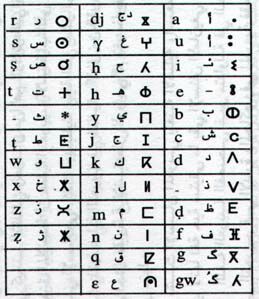Amazigh Culture
Traditionally, men take care of livestock. They migrate by following the natural cycle of grazing, and seeking water and shelter. They are thus assured with an abundance of wool, cotton and plants used for dyeing. For their part, women look after the family and handicrafts - first for their personal use, and secondly for sale in the souqs in their locality. The Amazigh tribes traditionally weave kilims. The tapestry maintains the traditional appearance and distinctiveness of the region of origin of each tribe, which has in effect its own repertoire of drawings. The textile of plain weave is represented by a wide variety of stripes, and more rarely by geometrical patterns such as triangles and diamonds. Additional decorations such as sequins or fringes, are typical of Amazigh weave in Morocco. The nomadic and semi-nomadic lifestyle of the Imazighen is very suitable for weaving kilims. The customs and traditions differ from one region to another.
The Imazighen through different civilizations, such as the Egyptian, Phoenician, Roman, Byzantine, and Arab, have been inspired and affected by each and have contributed greatly to each one. Medghacen, Severus, Massinissa, Juba, Syphax, Jugurthawere all great builders, and they have built great historical monuments.
The Imazighen have shone during the Middle Ages in North Africa and Al-Andalus. Many Imazighen were eminent scholars, writers, translators, architects, artists, musicians, philosophers, theologians, etc..
The social structure of the Imazighen is tribal. A leader is appointed to command the tribe. In the Middle Ages, many women had the power to govern, such as Kahina and Tazoughert Fatma in Aurès, Tin Hinan in Hoggar, Chemci in Aït Iraten, Fatma Tazoughert in the Aurès. Lalla Fatma N'Soumer was an Amazigh woman in Kabylia who fought against the French.
The majority of Amazigh tribes currently have men as heads of the tribe. In Algeria, the el Kseur platform in Kabylia gives tribes the right to fine criminal offenders. In areas of Chaoui, tribal leaders enact sanctions against criminals. The Tuareg have a king who decides the fate of the tribe and is known as Amenokal. It is a very hierarchical society. The Mozabites are governed by the spiritual leaders of Ibadism. The Mozabites lead communal lives. During the crisis of Berriane, the heads of each tribe resolved the problem and began talks to end the crisis between the Maliki and Ibadite movements. In marriages, the man selects the woman, and depending on the tribe, the family often makes the decision. In comparison, in the Tuareg culture, the woman chooses her future husband. The rites of marriage are different for each tribe. Families are either patriarchal or matriarchal, according to the tribe. to read more about Amazigh and Imazighen and their culture and history enter the link below:
Amazigh & Imazighen Culture & History






